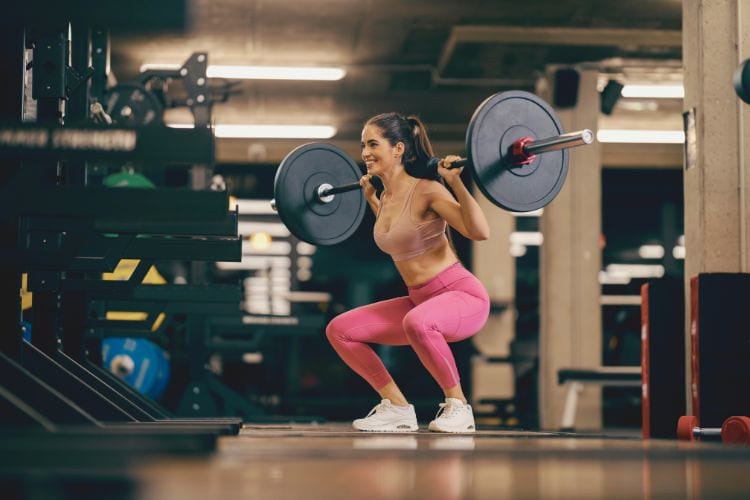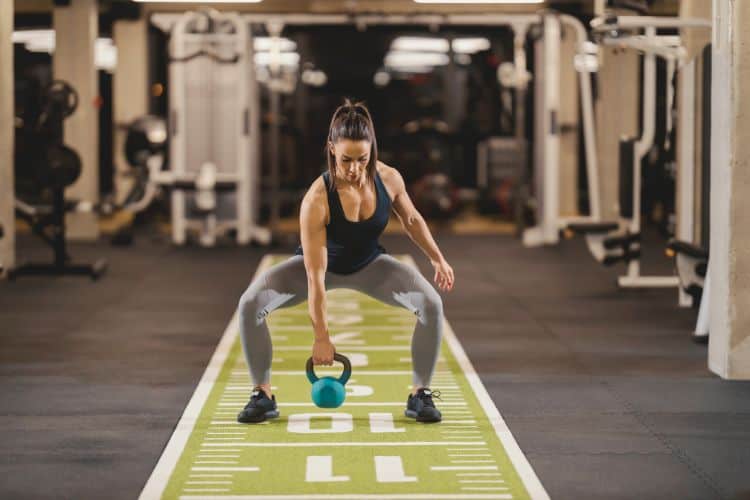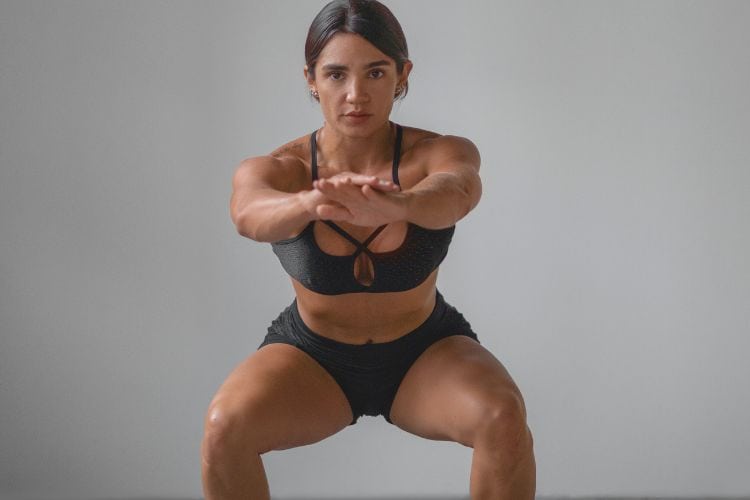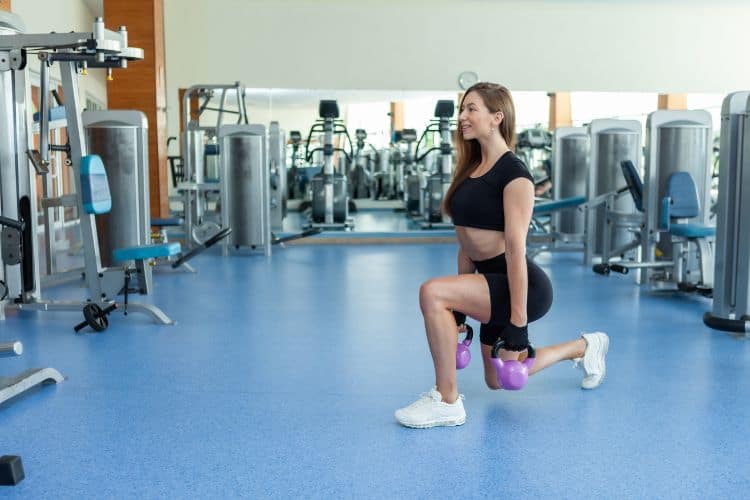Sign up for workout ideas, training advice, reviews of the latest gear and more.






When we think of quintessential exercises that promise a powerhouse of benefits, jump squats undoubtedly make the list. Whether you’re a fitness novice or a seasoned gym enthusiast, this dynamic move offers a unique combination of strength, endurance, and cardiovascular benefits. And while this exercise is beneficial for everyone, women, in particular, can reap some exclusive perks. Let’s explore the wonders of jump squats and why they should be a staple in every woman’s fitness routine.
Jump squats are an explosive variation of the traditional squat. Instead of rising to a standing position as you would with a regular squat, you jump explosively off the ground. This plyometric move not only strengthens your lower body muscles but also boosts your heart rate, making it a great cardio and strength training exercise combined.
a) Build Lean Muscle Mass: One of the primary benefits of jump squats is muscle building, especially in the lower body. Quadriceps, hamstrings, glutes, and calves all get a significant workout. For women, this not only results in toned legs and a firmer backside but also helps in combating age-related muscle loss.
b) Enhance Bone Density: Women are more susceptible to bone density loss as they age, particularly after menopause. Weight-bearing exercises like jump squats can help improve bone density, reducing the risk of osteoporosis.
c) Boost Metabolism: The explosive nature of JS demands a lot of energy, which in turn increases metabolic rate. This means you’ll be burning calories long after your workout is over.
d) Improve Balance & Coordination: The act of jumping and landing requires a great deal of coordination and balance. Over time, practicing jump squats can enhance these skills, which are particularly vital for women as they age to prevent falls and related injuries.
Tip: Ensure you’re landing softly to reduce the impact on your joints.
If the standard jump squat becomes too routine or if you’re looking to challenge yourself further:
Jump squats, like any exercise, require proper technique to ensure safety:
The beauty of jump squats is their versatility. They can be incorporated into HIIT workouts, circuit training, or even as a standalone exercise to break the monotony of a long workday.
For beginners, start with sets of 10 reps with rest in between. As you progress, increase the repetitions or try the variations mentioned above.
a) Hormonal Balance: Exercise, particularly resistance and high-intensity workouts like jump squats, can regulate the secretion of hormones. For women, maintaining a hormonal balance is crucial, especially during menstrual cycles, pregnancy, and menopause. Regular workouts can reduce symptoms like mood swings, fatigue, and insomnia.
b) Enhanced Cardiovascular Health: The heart is a muscle, and like all muscles, it gets stronger with exercise. Jump squats, with their intensive nature, serve as a cardio workout. Over time, they can help in reducing risks associated with heart diseases, high blood pressure, and cholesterol.
c) Mental Health Boost: JS are not just about the legs and glutes; they have profound effects on the brain too. The endorphins released during such high-intensity exercises can reduce symptoms of depression and anxiety. They can elevate mood, increase energy levels, and foster a sense of well-being.
a) Focus on Form: The quality of each squat is more vital than the number of repetitions. Keep your chest up, back straight, and ensure your knees don’t bow inward.
b) Progressive Overload: As with any exercise, the body will adapt over time. To continue seeing results, increase the intensity. This could be in the form of more reps, adding weights, or decreasing rest time.
c) Incorporate Stretching: Complement your routine with stretching exercises. This will not only enhance flexibility but also reduce muscle soreness and risk of injury.
While setting aside time for a workout is ideal, the hustle and bustle of a woman’s daily life might sometimes make it challenging. However, jump squats can be integrated seamlessly into daily routines:
a) “They’ll Make Women Bulky”: A prevalent misconception about resistance exercises is that they’ll make women overly muscular. Women typically have lower testosterone levels than men, making it harder to gain massive muscle bulk. Instead, JS will help women achieve a toned and athletic physique.
b) “They’re Only for Athletes”: While athletes often incorporate plyometric exercises like jump squats into their training, they’re beneficial for everyone. Whether you’re a mom chasing after your kids, a student, or a corporate professional, jump squats can offer health benefits and improved physical performance in daily tasks.
Like any exercise, jump squats come with their set of challenges:
a) Initial Muscle Soreness: It’s common to feel sore a day or two after. This is called Delayed Onset Muscle Soreness (DOMS). It’s crucial to differentiate between good pain (muscle fatigue) and bad pain (sharp, stabbing pain). The solution? Allow adequate recovery time, and engage in light activities like walking or stretching.
b) Motivation: Starting can be hard. It’s easy to feel motivated one day and entirely drained the next. Create a schedule, set small goals, and reward yourself upon achieving them. Having a workout buddy can also help in keeping motivation levels high.
Jump squats, a single exercise, pack the punch of several. They’re a testament to the fact that you don’t always need complex equipment or long hours at the gym to achieve fitness. For women, especially, they offer a gateway to not just physical, but also mental empowerment. Embracing jump squats is, in many ways, embracing a journey toward a more resilient, robust, and radiant self.
Stay up to date on the latest women’s health, fitness and lifestyle trends and tips.